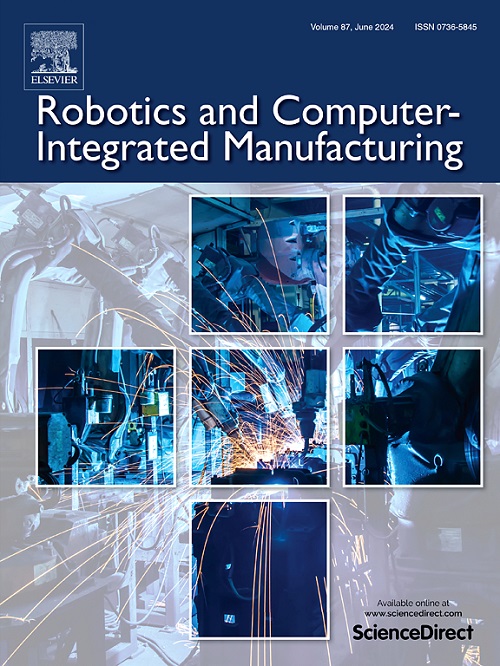3D Vision robot online packing platform for deep reinforcement learning
IF 9.1
1区 计算机科学
Q1 COMPUTER SCIENCE, INTERDISCIPLINARY APPLICATIONS
引用次数: 0
Abstract
In modern logistics and manufacturing, online mixed palletizing stands as one of the key automation technologies, facing challenges brought by the diversity of packages and real-time demand. However, traditional palletizing methods typically rely on preset rules, making them ill-suited to handle diverse bins in dynamic, real-time environments. This limitation becomes especially pronounced when dealing with complex palletizing tasks. To optimize the accuracy and operational efficiency of the palletizing process, this study, based on 3D vision technology and deep reinforcement learning techniques, designs a bin positioning algorithm utilizing projected bounding boxes. Additionally, spatial rotation position encoding is integrated into the decision-making process of the online palletizing network, designing a deep reinforcement learning algorithm for online mixed palletizing based on a masked attention mechanism. The paper also introduces a novel heuristic method—Boundary Point, which updates the palletizing state chain using key-point heuristics and “spatial” heuristics, and employs a pointer network for tail node selection. Experimental results demonstrate that the proposed method significantly improves average space utilization across the RS, CUT1, and CUT2 datasets. Finally, a 3D vision-based robotic online mixed palletizing experimental platform is designed and built, proving the effectiveness and application potential of the proposed algorithm.
3D Vision机器人在线打包平台深度强化学习
在现代物流和制造业中,在线混合码垛作为关键的自动化技术之一,面临着包装多样性和实时性需求带来的挑战。然而,传统的码垛方法通常依赖于预设的规则,使得它们不适合在动态、实时的环境中处理不同的箱子。在处理复杂的码垛任务时,这种限制变得尤为明显。为了优化码垛过程的准确性和操作效率,本研究基于3D视觉技术和深度强化学习技术,设计了一种利用投影边界盒的码垛定位算法。此外,将空间旋转位置编码集成到在线码垛网络的决策过程中,设计了一种基于掩蔽注意机制的在线混合码垛深度强化学习算法。本文还介绍了一种新的启发式方法——边界点,该方法利用关键点启发式和“空间”启发式对码垛状态链进行更新,并采用指针网络进行尾节点选择。实验结果表明,该方法显著提高了RS、CUT1和CUT2数据集的平均空间利用率。最后,设计并搭建了基于三维视觉的机器人在线混合码垛实验平台,验证了该算法的有效性和应用潜力。
本文章由计算机程序翻译,如有差异,请以英文原文为准。
求助全文
约1分钟内获得全文
求助全文
来源期刊
CiteScore
24.10
自引率
13.50%
发文量
160
审稿时长
50 days
期刊介绍:
The journal, Robotics and Computer-Integrated Manufacturing, focuses on sharing research applications that contribute to the development of new or enhanced robotics, manufacturing technologies, and innovative manufacturing strategies that are relevant to industry. Papers that combine theory and experimental validation are preferred, while review papers on current robotics and manufacturing issues are also considered. However, papers on traditional machining processes, modeling and simulation, supply chain management, and resource optimization are generally not within the scope of the journal, as there are more appropriate journals for these topics. Similarly, papers that are overly theoretical or mathematical will be directed to other suitable journals. The journal welcomes original papers in areas such as industrial robotics, human-robot collaboration in manufacturing, cloud-based manufacturing, cyber-physical production systems, big data analytics in manufacturing, smart mechatronics, machine learning, adaptive and sustainable manufacturing, and other fields involving unique manufacturing technologies.

 求助内容:
求助内容: 应助结果提醒方式:
应助结果提醒方式:


